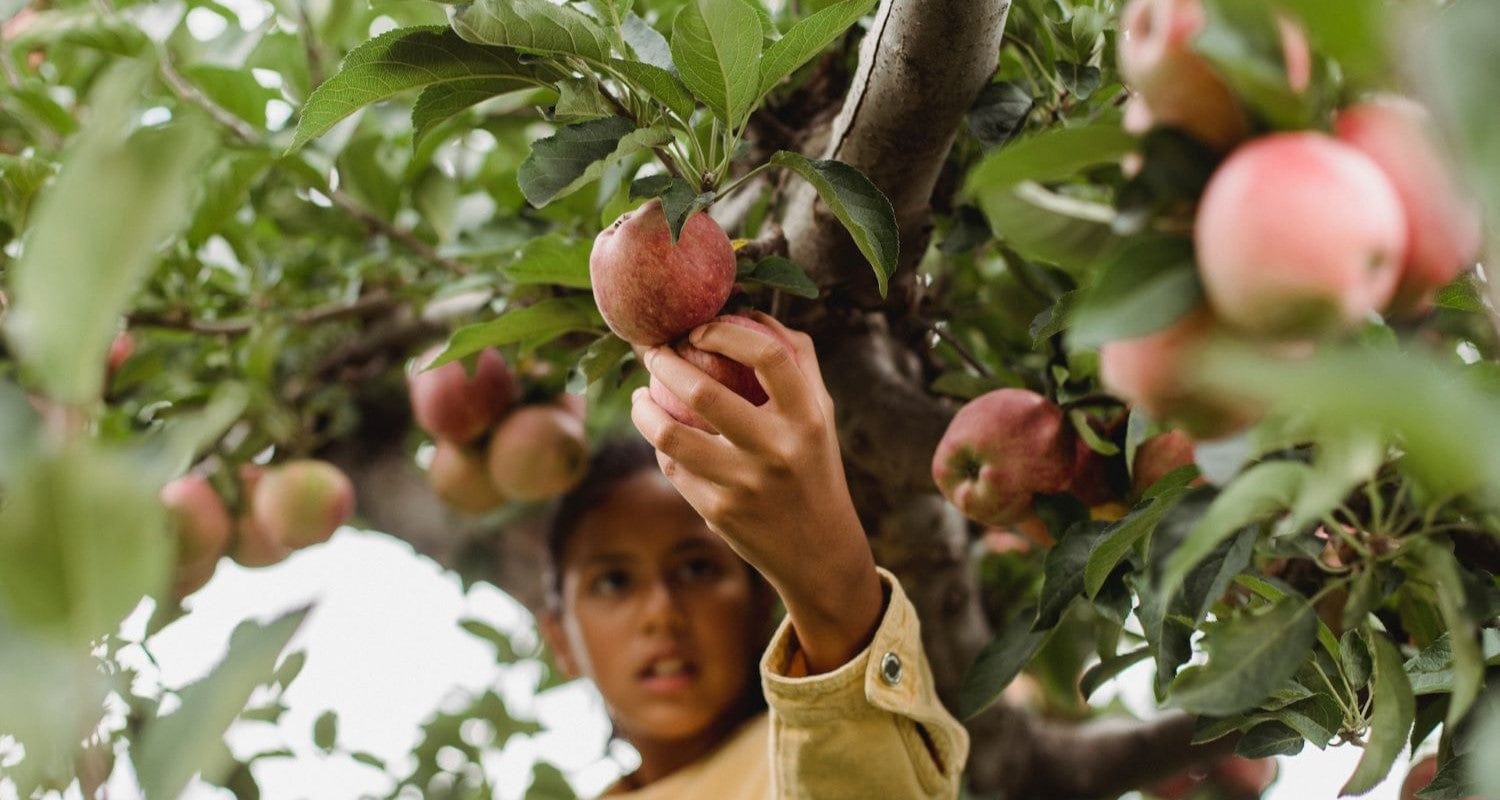Advice & Inspiration
Thinning Apples and Other Fruit Trees

Can too much fruit really be a bad thing? You’d think not, but professional fruit growers swear by thinning apples and other species, reducing the crop to produce bigger, better quality fruit. It’s not something I’d attempted before, so I spoke to our resident fruit tree expert John to find out the why and how.
Jump to:
- What is fruit thinning?
- Why do we thin fruit?
- Do you need to thin every year?
- When to thin fruit
- How to thin fruit
- What to do with fruit thinnings
What is fruit thinning?
Thinning is one of the simplest jobs you can do each year on your fruit trees to help you get regular crops. So why do so few home gardeners do it? In my case it’s because deliberately pulling fruit off my trees feels counter-intuitive. Surely you want as much fruit from your trees as you can get?
Why do we thin fruit trees?
“There are three main benefits to thinning,” says John.
- To significantly reduce the tendency of trees (apples in particular) to crop biennially (every other year).
- To increase fruit size.
- To reduce the risk of stem breakages from heavy crops (plums in particular) - or the need to prop branches.

Do you need to do it every year?
“Fruit thinning is only really necessary in years when flowering and pollination are excellent, leading to a very heavy fruit set,” John tells me, “if your fruit trees (apples in particular) cropped very heavily last year, the chances are that little or no fruit-thinning will be needed this year.”
This is because as they mature, many fruit trees get into a biennial habit, he explains, “bearing a heavy crop one year, then precious little the next while they recharge their batteries and grow in preparation for the next mammoth crop.”
How do you know when to thin?
According to John, these are the main reasons for fruit thinning:
- The variety (heavy croppers like Braeburn, Egremont Russet, James Grieve etc. may require thinning while shy croppers such as Blenheim Orange are very unlikely to).
- A light crop the year before.
- A cold winter helping the next crop of flower buds to fully develop (vernalisation).
- Good weather while the blossom is out (lots of insect activity hopefully leading to good pollination) and for the next 10-14 days (so good pollination develops into good fertilisation, not many appreciate that they are not one and the same).
“If any of these factors does not apply,” John tells me, “fertilisation is likely to be sub-optimal, and manual fruit thinning less (or un-)necessary.”
How to thin your fruit trees and when
Thinning simply involves removing some of the fruit from your trees - by hand, with a firm tug between thumb and forefinger, or using secateurs or scissors. Remove misshapen, blemished or poorly positioned fruit, aiming to leave the strongest and best shaped on the tree. John explains the best way to thin each type of fruit.
Thinning apples
Reduce the number of fruits in each cluster (often four or five) down to two, ensuring you always remove the “king” fruit - usually the biggest one in the middle. For some reason this is often deformed and is significantly more susceptible to imperfections such as bitter-pit, so removing it will improve the overall quality of your crop, and give you longer storage. Thin them in July, or even in August for later varieties such as Braeburn.
Thinning plums and apricots
It’s much better to thin plums and avoid the risk of breaking branches than to have to rig props to support over-laden stems! Individual fruits will be much bigger - giving a higher flesh to stone ratio, the risk of broken branches will be greatly reduced, and crops will be much more even from year to year. The thinning can actually be done at the flower stage by rubbing your hands down one side of each flowering branch to knock off 50% - 75% of the blossom. Alternatively, pinch or trim out fruitlets in early July, aiming to leave no more than five or six fruits per foot (30cm) of stem. Earlier fruit thinning is not recommended, better to wait till the “June drop” has sorted out all the imperfectly fertilised fruitlets so you can see how many viable fruits you actually have.

Thinning cherries
Thinning the fruits of cherries appears to bring no benefits at all. However, thinning the flower buds as they swell (in March) does appear to increase both fruit size and the total weight of the crop! The flower buds (on older trees) normally form in clusters of three, five or seven buds. These should be carefully reduced to two buds per cluster. “And to think that I used to scare away bullfinches!” says John. Same - I’ll be trying this method first in future!
Thinning pears
“I know of no one thinning pears,” says John, “presumably it brings no benefits.” That’s one job off the list, then!
What can you do with your fruit thinnings?
You don’t have to let those thinnings go to waste… perish the thought! If you’re handy in the kitchen, why not brew up a batch of apple cider vinegar? It's so versatile for cooking or even as a cleaning product. Thinnings of any kind are also good for making chutney - no one’s going to complain about them being small and weird shaped when they taste that good - or use them as a natural source of pectin to set your jams. Alternatively, feed them to the birds or compost them.




















